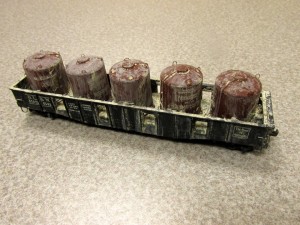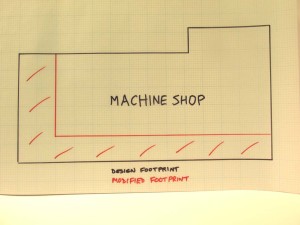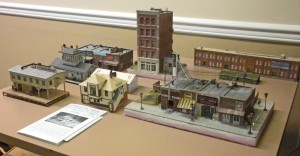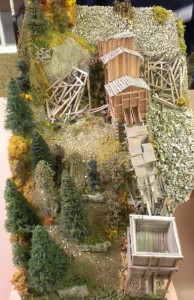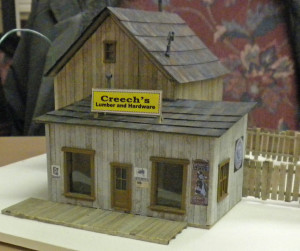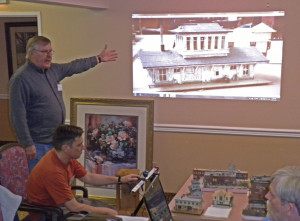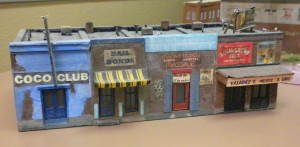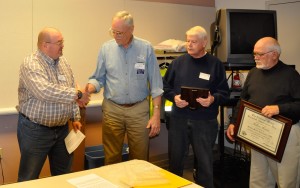David Yadock
Jeff Moorman
Bobj Berger (the PSC Committee)
and Russ Segner (4D Superintendent on behalf of our entire Board)
This year’s Pacific Science Center Model Railroad show was very successful thanks to the many volunteers and all the exhibitors that made the show possible. This show is the premier fundraiser for the 4th Division (PNR, NMRA).
The public was happy to see the trains at the Center for their annual visit and almost 12,000 attended. Yes, the square footage for the model railroad show was a little smaller this year since we had to make way for the Pompeii exhibit but the smiles from all the people attending the show were just as big as in previous shows. As usual, this show is a crowd pleaser.
Here is a listing of all who we have been able to identify as participants at the recent Pacific Science Center Show. Many were there all three days for the full sessions. They ran trains, answered hundreds of questions, re-railed and repaired trains and generally represented the great hobby of model railroading to a very grateful public.
Thank these folks for all their hard work on behalf of our hobby. If you missed out, we will be planning next year’s show very soon. Join one of these fine groups to share your skills and interest – info on most can be found at the 4D Clinics page or the 4D Modules page.
General Volunteers
Don Melnick
Linda & Al Pellegrini
Bob Richard
Seamus Richard
Charles Gerton
Fred Hamilton
Fred Philbrook
Phil Gonzales
Dennis Murphy
Ed Liesse
Rod Olson
Cliff Green
Nathan Green
Michael Posner
Fritz Grant
Alex Grant
Omni-Rail
Dennis Terpstra
Jim Merriam
Marcee Merriam
Walt Scotson
Nolan Deardorf
Paul Pellegrino
Bobby Pellegrino
Peggy Barchi
Mark Wilkerson
Dennis Snook
Larry Dalke
David Olix
Northwest Transportation Museum
Al Ramey
Ruth Ramey
Linda Smith
Lawrence Holliday
Bud Thompson
David Agee
Dorë
Baby Gramps
Val Jones
Mike Petrocelli’s Layout
Rod, Zindra, Josiah, Jed, Jaden, Julia, Jeranna Nelson
Keith Lyons
Jim Morgan
David Moses
Jamey Morrison
Gil Hermans
Wally Davis
Charlotte Morgan
Mason Morgan
Keith Lyons
Dave Montgomery
Shawn Newkirk
Tim Finley
Bruce Porter
Adam Phillips
David Phillips
AL Lowe
Doug Bulger
David Cook
Edwin Hill
Neill Clift
Peter Clift
Mike Donnelly
Scott Marshall
John Marshall
Kent Sullivan
Sean Sullivan
Mateo Kuo
Malcolm Kuo
Steve Kuo
Jennette Kuo
Annette Shephenson
Tom Stephenson
Emily Korson
Marra Holmes
Debra Limon
Kim Tepe
Steven McKay
Kelley Heavey
Dwight Vantuyl
Build-A-Dream
Walt Huston
Jack Hamilton
Bill Hupe
Steve Hauff
Gil Hermans
NMRA table
Bob Rorabaugh
Russ Segner
Rick Jillard
Robin Peel
Wendy Yadock
HO modular
Rob Staples
Thomas Johnson
Dave Ellis
Tom Barrett
Larry Sloan
Ross Tabor
Joel Scott
Norm Curtis
Paul Fischer
Mike Laughlin
Judy Laughlin
Donn Yeo
John Johnson
Alex Brikoff
Tina Brikoff
James Monroe
Nicholas Arnold
Peter Gulick
Playmobile
Quin Jones
Shauna Jones
Burton Jones
Hi-Rail
Sam Hayden
Ed Ives
Wayne Grinnell
Woody Matthews
Marc Sachnoff
Ed Pennington
Ray Francis
Cindy Francis
Committee folks
David Yadock
Jeff Moorman
BobJ Berger
A special thanks to Al Turnbull who was able to attend and display his Cascades & Western layout.



